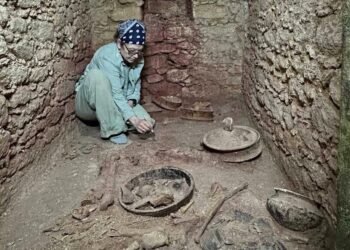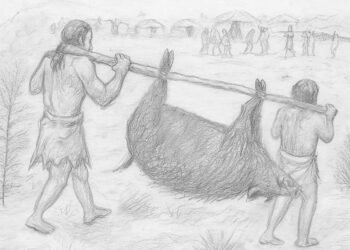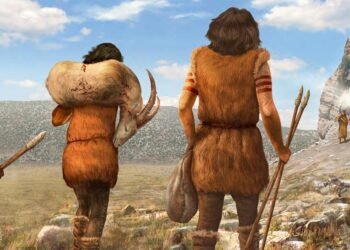A new study published in Proceedings of the National Academy of Sciences (PNAS) overturns long-held assumptions about the transition from hunting and gathering to farming. While previous theories relied on environmental factors such as climate change and fertile land, this study emphasizes the importance of human interactions in bringing about one of the most significant transitions in human history.

The transition from a nomadic hunter-gatherer life to settled agricultural societies began about 12,000 years ago and fundamentally changed human civilization. Decades ago, scholars speculated about its causes, with many believing that external factors like climatic warming and increased precipitation were responsible. However, researchers from the University of Bath, the University of Cambridge, University College London (UCL), and the Max Planck Institute for Evolutionary Anthropology have now found that demographic interactions between populations were more important than previously thought.
Using a mathematical model originally developed to analyze predator-prey interactions, the team investigated how early agricultural and hunter-gatherer societies influenced each other. Their results suggest that the spread of agriculture was determined by factors including migration, competition, and cultural exchange. Humans were far from being passive recipients of environmental change; rather, they actively participated in the processes that led to the emergence of agriculture.
Dr. Javier Rivas, from the Department of Economics at the University of Bath, explained: “Our study provides a new perspective on prehistoric societies. By statistically fitting our theoretical predator-prey model to observed population dynamics inferred from radiocarbon dates, we explored how population growth shaped history and uncovered interesting patterns—such as how the spread of farming, whether by land or sea, influenced interactions between different groups. More importantly, our model also highlights the role of migration and cultural mixing in the rise of farming.”

The study compared archaeological and genetic data from three regions—Denmark, eastern Iberia, and the Japanese island of Kyushu. The case studies show that contact between migrant farmers and local hunter-gatherers was crucial to the pace and nature of agricultural expansion. Competition for resources, cultural assimilation, and differences in population growth influenced the spread of agricultural practices in different regions.
Another finding of the study is the role of social networks in facilitating the transition. Farming societies rely on collaboration, knowledge transfer, and trust to maintain their agricultural practices. Cultural transmission plays a central role, with agricultural techniques passed down from generation to generation and adapted to stabilize early agricultural societies. The establishment of social norms and governance structures also helped regulate land use and resource allocation and laid the foundation for complex civilizations.
By shifting the focus away from environmental determinism and toward human agency, this study reshapes our understanding of what is perhaps the most significant event in human history. The researchers plan to continue refining their model by introducing other variables and extending its application to broader geographic areas. As Dr. Rivas said, “We hope the methods we’ve developed will eventually become a standard tool for understanding how populations interacted in the past, offering fresh insights into other key moments in history, not just the shift to farming.”
























Comments 0